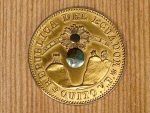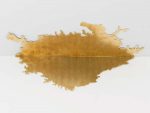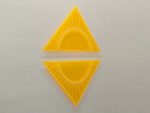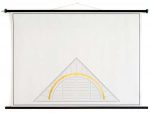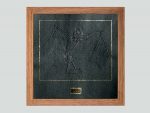The Doubloon – Edition
2015, Brass, iron, cardboard
Diameter of the doubloon 35 mm
A limited edition of 15, each signed, numbered and packed in a gray cardboard box. The doubloon comes with nails to attach to a place of your own choosing. (Including the optional definition of your own goal.)
Edition version of the work The Doubloon; or, I look, you look, he looks; we look, ye look, they look
“… this round gold is but the image of the rounder globe, which, like a magician’s glass, to each and every man in turn but mirrors back his own mysterious self. Great pains, small gains for those who ask the world to solve them; it cannot solve itself.” Captain Ahab
The attached doubloon is an altered copy of the coin which appears in Melville’s novel, “Moby Dick”. The character, Captain Ahab, nails the coin on the main mast as an incentive and reward for the first person to spot the white whale.
The doubloon corresponds to the description in the text, so certain elements of the original Ecuadorian doubloon have been removed if not mentioned in the text.
In addition to its significance as a reward, the doubloon is a metaphor for each meaning being dependent on the observers view of the world.
In “The Doubloon,” a chapter from Moby Dick, eight members of the ships crew each interpret the doubloon in an entirely different way. The interpretation is a mirror image of each respective character. Everyone sees their own world in the doubloon and this illuminates interpretation as reflective and individual. The doubloon, therefore, is also an image of reciprocal phenomena regarding interpretation as such.
The comment of the mad cabin boy Pip: I look, you look, he looks; we look, ye look, they look.
“Pip’s stammering of the conjugation of “to look”, could eventually—in spite of its seeming absurdity—be taken as an eloquent concluding comment on a chapter, in which the subjectivity of human perception and its no less subjective interpretation are exemplified.” Bernd Engler, Fiktion und Wirklichkeit: Zur narrativen Vermittlung erkenntnisskeptischer Positionen bei Hawthorne und Melville. Berlin: Duncker & Humblot 1991, S. 256.












